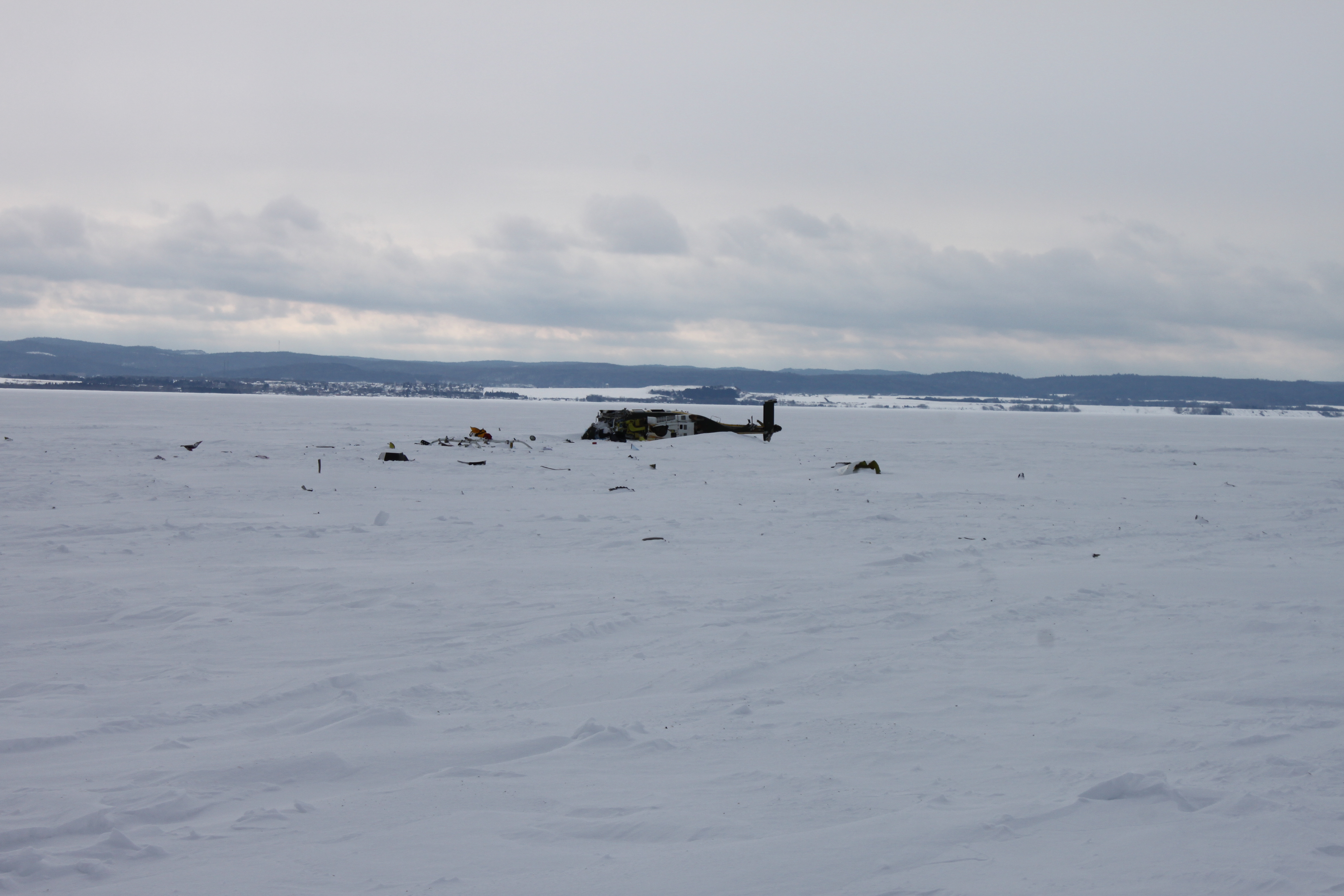Controlled flight into terrain
Service aérien gouvernemental of Quebec
Bell 206L-4 (helicopter), C-GSQA
Lac Saint-Jean, Quebec
The occurrence
On the morning of , 2 helicopters operated by Quebec’s Service aérien gouvernemental took off from the Montréal/St-Hubert Airport (CYHU), Quebec, at 0750 Eastern Standard Time, bound for Saint-Henri-de-Taillon, Quebec, to provide air support to a search for snowmobilers who had been reported missing the day before.
Early in the afternoon, one of the 2 helicopters, the Bell 206L-4 (registration C-GSQA, serial number 52060), was released from this assignment, and the pilot, alone on board, took off from Saint-Henri-de-Taillon at 1402, bound for the La Tuque Aerodrome (CYLQ), Quebec. Approximately 7 minutes after takeoff, the helicopter struck the frozen, snow-covered surface of Lac Saint-Jean. The aircraft was destroyed but there was no post-impact fire. Despite serious injuries, the pilot was able to egress from the aircraft and call the Service aérien gouvernemental dispatcher to report the accident.
The dispatcher notified the pilot of the 2nd helicopter involved in the search. That pilot went to the scene of the accident accompanied by 2 first responders. The helicopter landed at approximately 1445, then took off again to evacuate the injured pilot to the hospital in Roberval, Quebec.
The emergency locator transmitter in the occurrence helicopter activated. The signal was detected by the Canadian Mission Control Centre in Trenton, Ontario, at 1410:34.
Media materials
News release
Flat light contributed to the 2020 collision of a helicopter with the frozen surface of Lac Saint-Jean, Quebec
Read the news release
Deployment notice
TSB deploys a team following helicopter accident near Beemer Island, Quebec
Dorval, Quebec, 22 January 2020 – The Transportation Safety Board of Canada (TSB) is deploying a team of investigators following an accident involving a Sûreté du Québec Bell 206 helicopter near Beemer Island, Quebec. The TSB will gather information and assess the occurrence.
Investigation information
Download high-resolution photos from the TSB Flickr page.
Class of investigation
This is a class 3 investigation. These investigations analyze a small number of safety issues, and may result in recommendations. Class 3 investigations are generally completed within 450 days. For more information, see the Policy on Occurrence Classification.
TSB investigation process
There are 3 phases to a TSB investigation
- Field phase: a team of investigators examines the occurrence site and wreckage, interviews witnesses and collects pertinent information.
- Examination and analysis phase: the TSB reviews pertinent records, tests components of the wreckage in the lab, determines the sequence of events and identifies safety deficiencies. When safety deficiencies are suspected or confirmed, the TSB advises the appropriate authority without waiting until publication of the final report.
- Report phase: a confidential draft report is approved by the Board and sent to persons and corporations who are directly concerned by the report. They then have the opportunity to dispute or correct information they believe to be incorrect. The Board considers all representations before approving the final report, which is subsequently released to the public.
For more information, see our Investigation process page.
The TSB is an independent agency that investigates air, marine, pipeline, and rail transportation occurrences. Its sole aim is the advancement of transportation safety. It is not the function of the Board to assign fault or determine civil or criminal liability.
